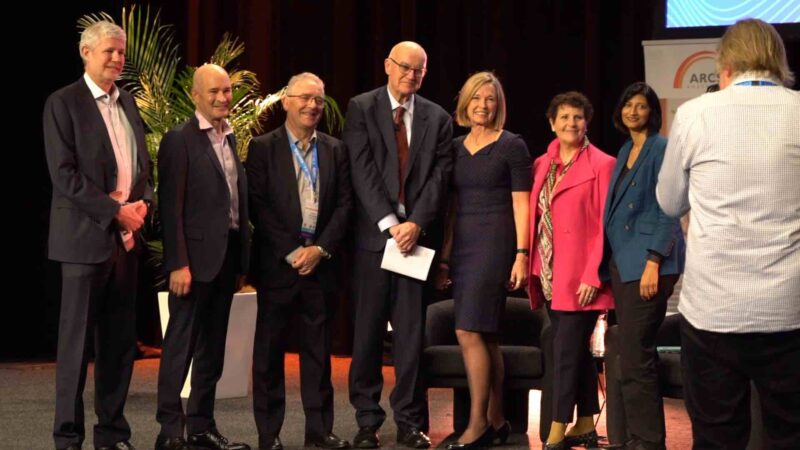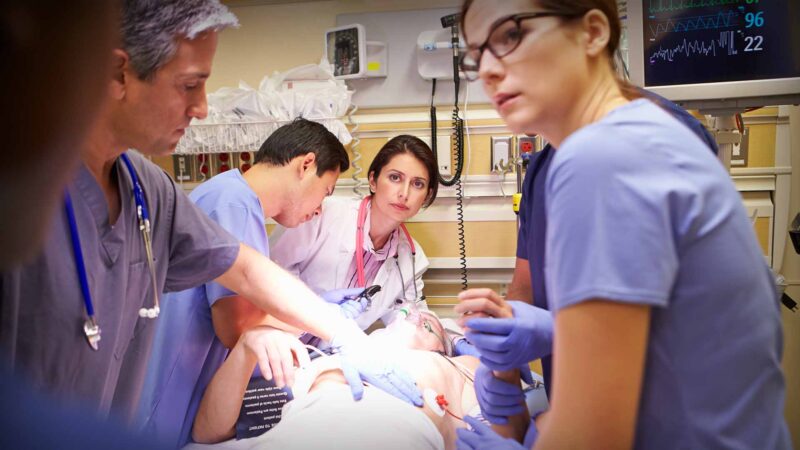STILL SEEKING OUTCOMES AFTER 6TH STOMA APPLIANCE SCHEME SCHEDULE REVIEW:
LOWER QUALITY OF LIFE AND OTHER HEALTH IMPACTS EXPERIENCED BY OSTOMATES
Matt Dalton
Chair, Stoma Industry Association
SEGMENT RELEASE
Filmed in Sydney, New South Wales | December 2024
A stoma is a surgically created opening in the abdomen to remove body waste, such as faeces and urine. Many conditions can require a stoma, including colorectal cancer, inflammatory bowel disease (IBD), Crohn’s disease and ulcerative colitis, bladder cancer, injury trauma, and congenital defects.
50,000 Australians have undergone the trauma and challenge of having a stoma inserted. Whilst the Australian Government invests in the appliances and products they need through the Stoma Appliance Scheme (SAS), this list is dated and doesn’t include as many of the products available in other countries. A new report commissioned by the Stoma Industry Association (SIA) shows Australia lagging countries such as the United Kingdom, Canada and Spain in supporting ostomates (people with a stoma).
The report found that the Quality of Life (QoL) for Australian ostomates is lower than other developed nations and the general community. The reason for this includes:
- Australia reimburses fewer products on the Stoma Appliance Scheme (SAS). The UK provides 60 per cent more, for example.
- Australian spending as a percentage of GDP is five times smaller than Canada, and three times smaller than the UK.
- There are fewer specialist nurses to support the patient population. According to the Australian Association of Stomal Therapy Nurses, “A Stomal Therapy Nurse (STN) specialises in the management of patients with faecal and urinary diversions. In addition, the STN is an expert in the management of difficult and draining wounds, fistulae, gastrostomies, acute and chronic wounds and associated skin care. In short, STNs can assist with advice and management of any stoma and wound issue, and may also provide continence advice.”
The report also details the daily challenges of Australian ostomates:
- 1 in 5 stoma patients isolate themselves from others
- 65 per cent of patients say their ability to work is negatively impacted
- 3 in 5 patients experience a reduction in intimacy
Stoma appliances and supporting products are subsidised by the Commonwealth funded scheme.
There have been five reviews of the SAS, none of which have been released. The current (sixth) review released earlier this year by the Australian Government.
Australian Health Journal spoke with the Stoma Industry Association Chair, Matt Dalton about the same access to products needed by 50,000 Australian ostomates and the quality of life as patients overseas.
You Might also like
-
Understanding extracellular vesicles in cancer therapy research
Joy Wolfram is an Associate Professor at the Australian Institute for Bioengineering and Nanotechnology and the School of Chemical Engineering at the University of Queensland in Australia. Originally from Finland, she earned both her bachelor’s and master’s degrees in biology before transitioning to engineering with a PhD in nanotechnology completed in China. Wolfram has over a decade of experience working in hospitals in the United States before joining the University of Queensland.
Her research focuses on extracellular vesicles, which are crucial for cell communication both locally within tissues and over longer distances between organs. Her lab studies the roles of these vesicles in both health and disease, particularly in cancer. They investigate the harmful messages released by cancer cells that aid in tumour growth, specifically in breast cancer, while also exploring how to harness beneficial extracellular vesicles from healthy individuals as potential therapeutics.
-
Recognising service in health regulation
In April 2023, Professor John Skerritt retired from his position of Deputy Secretary Health Products Regulation Group, a role he has been in since 2012. During his time at the TGA he had line responsibility for over 1200 staff involved in the regulation of therapeutic goods, regulation of gene technology and industrial chemicals and control of drug import, export and production.
At this year’s ARCS 2023 Conference, ARCS Australia CEO Dr Shanny Dyer paid tribute to Professor Skerritt and his service to the Australian health industry. She led a tribute with fellow industry heads, Elizabeth de Somer, CEO, Medicines Australia, Anne Harris, Managing Director, Pfizer Australia & New Zealand, Deon Schoombie, CEO, Consumer Healthcare Products Australia, Ian Burgess, CEO, Medical Technology Association of Australia and Arthur Brandwood, President ARCS Australia.
-
Landmark research projects tackle critical issues in emergency healthcare
For two decades, the demand for emergency department services in Australia has outpaced population growth and wait times have increased. In 2022-2023 more than 8.8 million emergency department presentations occurred nationwide.
While demand is a contributing factor, EDs are currently being impacted by various factors across the entire health system.
The Emergency Medicine Foundation (EMF) is a non-profit organisation funding innovative Australian research that improves the way people are cared for in a medical emergency. The aim of the research is to deliver better and more effective health services to save lives and money.



